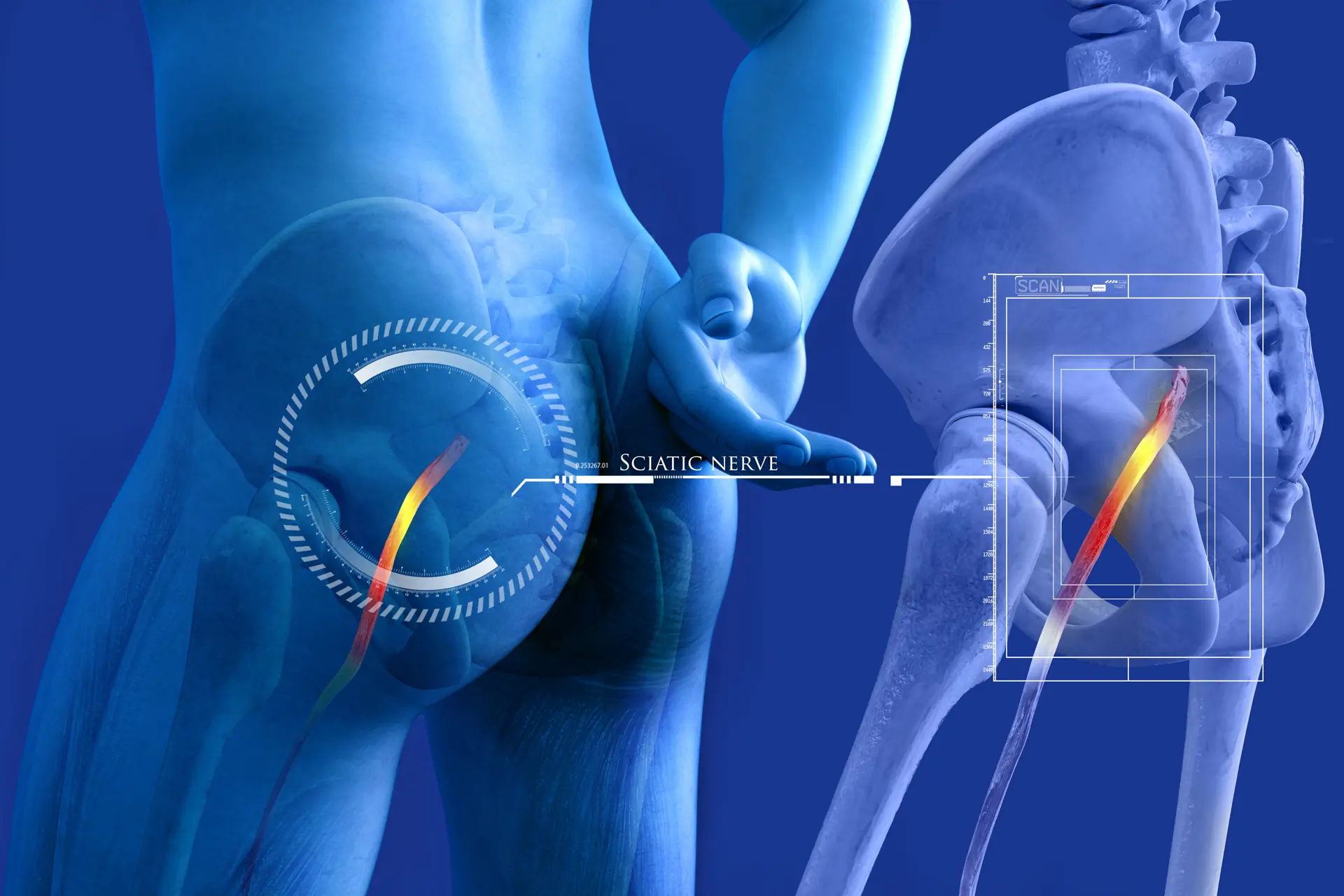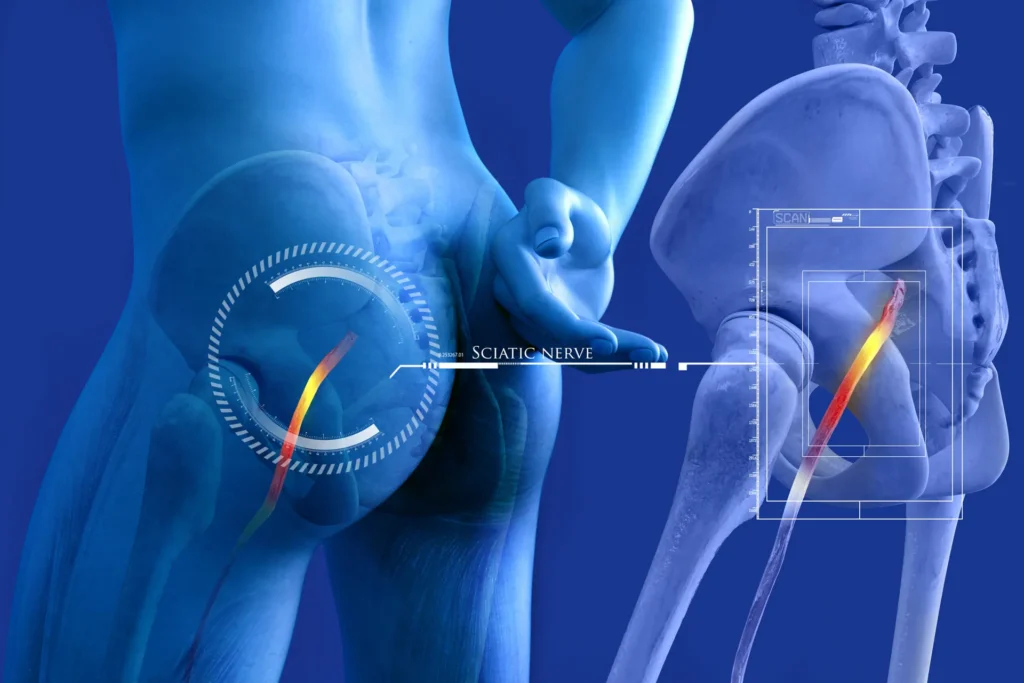True sciatica results from compression of the sciatic nerve and many people assume (often falsely) that it is because of a prolapsed disc causing compression of the sciatic nerve and that they are going to require surgery to solve it; fortunately, this is rarely the case, though it needs to be born in mind and suitably investigated. There are in fact many many different conditions that can cause sciatica including Spondylolisthesis, spinal stenosis, piriformis syndrome, pelvic tumours, and pregnancy. This is why we class ‘sciatica’ as a description of the symptoms but not a proper diagnosis. Only once you know what the particular problem is, that is actually causing sciatica, will you then be able to know what the appropriate treatment would be for that individual patient.
Or to put it another way, you can’t really treat sciatica but you can treat many of the different possible problems that actually cause sciatica; those different problems require different types of treatments. That is why an appropriate diagnosis of the problem causing the sciatica is required.
Surprisingly (and pleasingly), there is one quite common cause of sciatica that actually has nothing to do with compression of the sciatic nerve at all. If the sacroiliac joint is not moving properly then the joint itself can refer and shoot pain down the leg which will often be incorrectly assumed to be sciatica (or nerve compression), even though there is no compression of the sciatic nerve at all. This very common cause of ‘sciatica’ is one of the many conditions and causes of sciatica that our doctors of chiropractic at this clinic are very well trained in diagnosing and also treating.
Likewise when a joint in the spine, and in particular the sacroiliac joint (or pelvis joint), is not functioning properly your body tries to protect the joint, it does this by making muscles tighten up to guard the joint. One of these muscles that tightens up to protect the joint is the piriformis muscle; and, when this muscle goes tight to protect the sacroiliac joint, it can cause pressure on the sciatic nerve. Many people get treatment of the piriformis muscle to relax it so that it in turn stops putting pressure on the sciatic nerve. Although this can sometimes be successful it has been reported by many to come back again and again. Usually if this is the case then the reason why the muscle keeps going tight may have been overlooked; again this type of piriformis syndrome can often be because the sacroiliac joint is not working properly and this in turn is why the piriformis muscle keeps going tight no matter how much therapy or exercises or stretches the patient does. Repeatedly treating the muscle or doing exercises for the muscle is like trying to bail out a boat without plugging the hole in the first place; it will go on and on and on; often the way to stop the muscle from constantly re-tightening up is to have your chiropractor treat the actual joint that is causing the muscle to go tight in the first place; thus solving the problem as well as getting rid of the symptoms.
Whatever the cause of your scitica is, our doctors of chiropractic are suitably trained to diagnose and either advise, treat or refer you on in the appropriate manner.
























